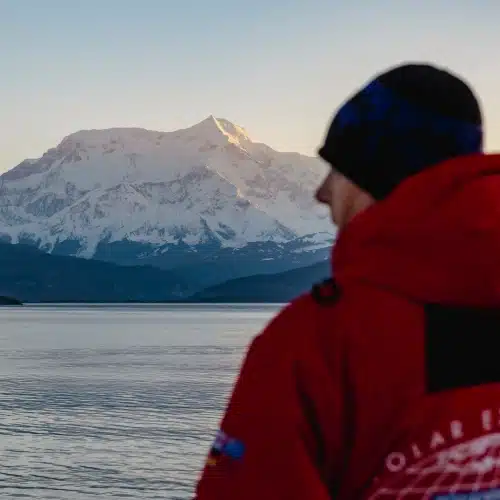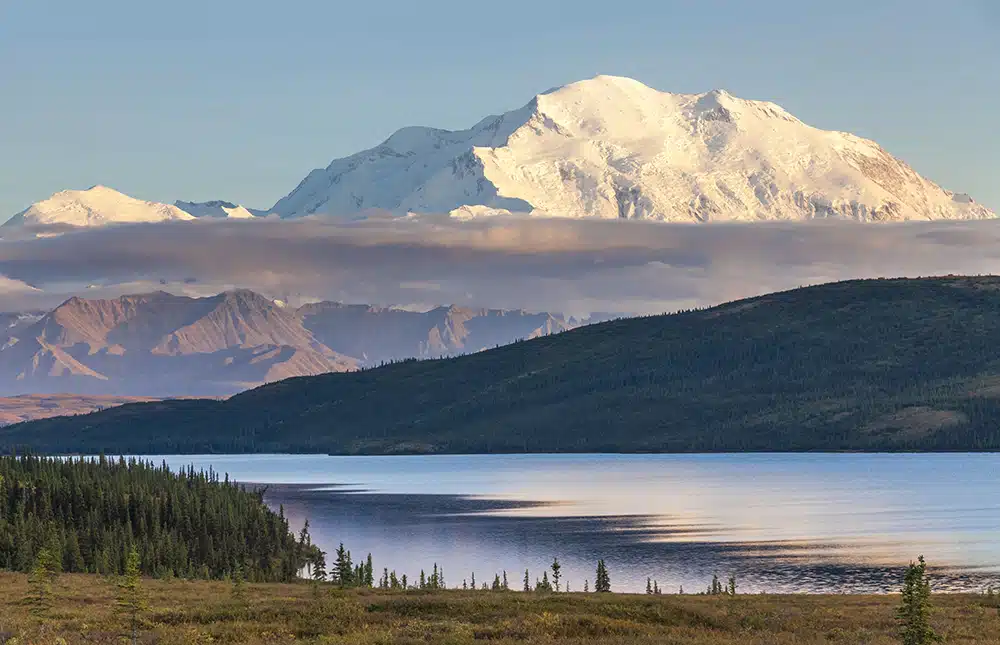A land of superlatives
Alaska is America’s largest, most northerly and wildest state filled with glaciers, vast forests and iconic wildlife. Below, six amazing and little-known facts give you a taste of Alaska’s breathtaking natural riches.
1. Half of the world’s glaciers
From its coastal regions to the soaring mountains of the interior, Alaska is home to almost 100,000 glaciers – that’s half of all the glaciers on the planet. While most have no name, some are particularly famous, such as the Matanuska Glacier, which covers an area of 3,900 km² and is one of the largest in the world. These marvels of blue-tinted ice can be approached by sea, air or sometimes even on foot. For example, if you sail Icy Bay (an officially protected American heritage area), you can go to the Guyot and Malaspina Glaciers. They emerge majestically from between the rocks and run down into the ocean.
2. The biggest brown bear on the planet
Katmai National Park in southern Alaska is home to one of the world’s largest populations of brown bears. Its rivers are their favourite hunting ground, as this is where salmon come to spawn. Every summer, they feast on the abundant fish to build up their reserves ready for hibernation. This helps them to increase their body weight by as much as 50%. Fat Bear Week celebrates this special time of year. Since 2014, the park has been organising a competition every October to find the biggest brown bear. Fans are invited to vote online for their favourite based on images beamed back from cameras installed around the area. In 2023, a female named 128 Grazer who weighed an estimated 320 kg secured the top spot.
3. The world’s largest gathering of bald eagles
A symbol of strength and freedom, the bald eagle is considered a sacred bird in Native American cultures. It has also been the emblem of the United States since 1782. Every October and November, the Chilkat Preserve in the Inside Passage region hosts the world’s largest gathering of bald eagles, when 3,000 to 4,000 birds flock to the area. Their powerful wings unfurl across this deep valley’s skies, and wildlife enthusiasts and nature photographers always love to watch them swoop down to feed on river salmon.
4. The highest totem pole in the world
The village of Kake, on Kupreanof Island, is home to the Native American Tlingit community. A small enclave cut off from the rest of the planet and accessible only by boat or seaplane, Kake erected the world’s official highest totem pole in 1971. This carved cedar trunk standing at nearly 40 metres tall and commissioned for the 100th anniversary of the Alaska Purchase symbolises first and foremost the resilience of a people subjected to historical persecution. From salmon to orcas, frogs and a man sacrificing a sea lion, the carved emblems of the Tlingit, Tsimshian and Haida clans unite these three tribes from the south-east of the peninsula and help to pass on indigenous cultures and traditionss.
5. America’s largest forest
The Tongass National Forest is a globally unique ecosystem which extends over 69,000 km² of land, making it the largest wooded area in the United States and a genuine ecological treasure trove. Covering most of south-east Alaska, it alone holds a third of the world’s temperate rainforests. With its thousand-year-old trees, lakes, rivers and glaciers, this nature sanctuary also hosts an abundance of wildlife, including bears, deer, wolves and eagles. As a protected natural area, it can be explored in all kinds of ways, from hiking trips and wildlife-watching to sailing the fjords.
6. One bear for every five humans
Despite being the largest of the 50 American states, Alaska is actually the least populated. It has almost 740,000 residents living in an area of over 1.7 million km², giving it an extremely low population density of 0.43 inhabitants per km². Its wildernesses provide an ideal habitat for thousands of species to roam freely. It’s a haven for bears in particular, providing a home for three species: the brown bear, black bear and polar bear. The fact that there is one bear for every four to five humans gives you an indication of how many of them there are throughout the state. Denali National Park, Pack Creek Bear Viewing Area, Kodiak Island and the Arctic pack ice are some of the best places to see them.
Photo credits: ©iStock; ©PONANT/Julien Fabro; ©StudioPONANT/Soizic Roux/Servane Roy-Berton/Margaux Coupez/Guillaume Robin

Explore nature’s wonders with PONANT
Set off on an unforgettable trip to North America



